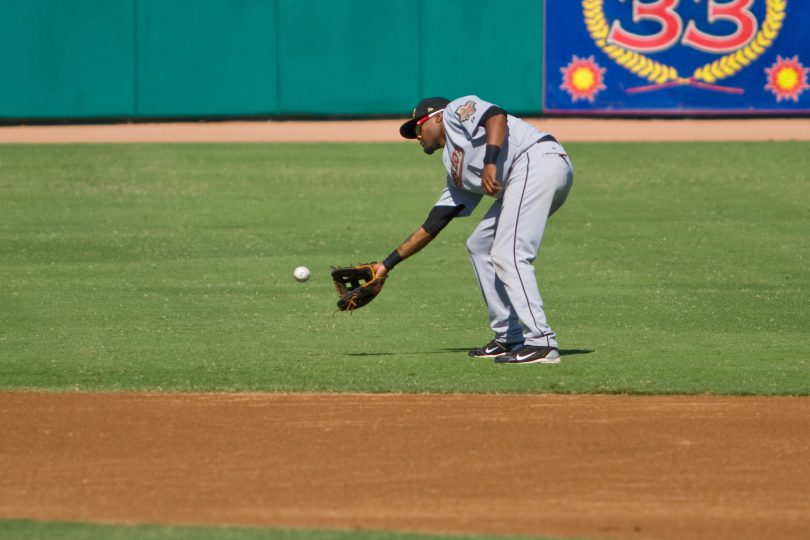The Situation:
There is no one on and 1 out in the top of the 4th inning of a 1-1 game. The game is being played on a turf field and the left-handed batter steps in for his 3-1 pitch against the right-handed starting pitcher.
The Play:
The pitcher delivers a fastball with cut that starts away and cuts back over the plate, a borderline strike towards the bottom of the zone. To the pitchers surprise, the batter swings and chops it hard off the turf. The bounding ball springs high into the air and sends the pitcher running back towards the second baseman like a wide receiver trying to make an overhead grab. He can’t quite get there and the second bounce comes down on the turf between the pitcher and second baseman. The batter is a below average runner, but even so, there is little chance the second baseman will be able to grab the ball on the run, transfer to his throwing hand, and make the off balance throw in time.
The Outcome:
The second baseman gets the easy second hop on the run but pockets it, not making the throw that he knows would be late.
What Went Wrong:
Technically, nothing about this play went wrong for the defense. The pitcher made a tough pitch, got weak contact, and the ball found a rare hole in front of the infielder. The second baseman charges hard but decides he shouldn’t risk making a poor throw on a play that he is certain will result in a hit. That all seems fine. So, what is the mistake?
We are going outside the box on this one. Part of being able to think the game is the ability to improvise on the fly. A player who thinks the game is able to consider all options in the realm of possibility quickly and select the appropriate one. This takes knowledge, skill, savvy, and creativity. The mistake on this play was the fielder’s limited creativity when trying to quickly consider how to make the play.
Coaches, this is knit-picking to be sure, but the reality is that the inability to make this play is as much on training protocols as it is on the player. Far too often, we coach the creativity out of players.
Think about this article like an exercise in creativity. If everything is on the table, what options could the second baseman considered for making this play? If you can’t think of any, it’s time to do some outside the box thinking. We can think of a few (although their success would be debatable, but that’s not the point!):
- A one-handed bare hand and throw on the dive
- Dropping his glove, fielding with two bare hands and shoveling the ball with his left hand
- A long glove flip on the run
- Using the outside of the glove to swat the ball over
You get the picture. There are infinite ways to try to make this play. While most of them will not work or are not worth the risk, guess what? We have proof that one of them does work!
Watch this exact play unfold and the second baseman use option #3 listed above to make an incredible play. Even the announcers are shocked, concluding they have never seen anything like it.
So what’s the lesson here? Be creative. That goes for player and coaches. Yes, you want to play the percentages and minimize risk, but in this situation where there is no other runners and little chance that a mistake will be costly, why not be creative. As a player, reflect on plays that don’t result on an out and ask yourself if there is anything in the realm of possibility that could have been done. If you can think of something, catalog it for next time. Watch other players and make note of the creativity you see. As coaches, encourage creativity through drills. One drill we love is either playing H-O-R-S-E on ground balls, or having a group of fielders field the same ball but not let any fielder repeat the way another fielder plays the ball. In drills like these, you have to throw your standard coaching techniques out the window. Expect that there will be inefficiency and errors. It’s all in the name of fun and thinking outside the box, two things that are important. Tweak the rules as you see fit and let your players get creative. Who knows, it may turn into an extra out somewhere!







